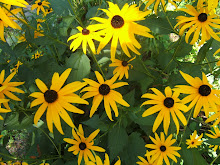Inverness has a harness racing track just on the edge of town. My sister knows somebody who is involved with one of the horses so on race day we decided to go see the ponies. I know next to nothing about harness racing other than they drive Standardbred horses and some races feature "pacers" and some "trotters", but I thought it would be more fun if we tried to assess the horses and put some money down.
We bought a program that listed the nine races and which horses were running. That seemed simple enough, but wait a minute what was all this on the other pages...
all kinds of statistics, and breeding history, and other inscrutable information. We were, after all, just at the Inverness (population 1,500) racetrack. I had sorely underestimated how seriously the local people were involved with the horses. We decided that given our ignorance, our best chance of picking a winner would simply be to watch them warm up. We placed $2 bets for the top three spots in three races and managed to get the show (3rd place) right in a couple of races. That earned us $4.20 on our $18 investment. The last race featured a horse called Seaside Lizzie, and because my sister's name is Elizabeth, we decided pick her as the winner even though her odds weren't great. Well, she came through for us with a thrilling finish and we made a whopping $8 for our $2 bet. We also managed to pick the show for that race. All told we were only down $10 for the afternoon.
Some of the winners had their picture taken in front of the scoreboard. I love the way it's a family affair -even the dog gets to be in the picture.
A little bit of info on harness racing. Harness racing goes back to the end of the 1700's and the founding sire for Standardbreds was an English horse called Messenger. The standard was being able to do a mile in 2 minutes and 30 seconds at a trot or pace. Horses that could meet that standard were eligible to be registered as Standardbreds. They are similar to Thoroughbreds that are used for regular flat racing, but they are a little heavier and less high strung. Standardbred horses sometimes have the ability to pace which means that instead of trotting with diagonal legs moving at the same time, the two legs on the same side move at the same time. The races are set for either trotters or pacers as pacing is a slightly faster gait than trotting. Most Standardbreds are bays or dark brown, but they can be any colour.
Many small towns in Canada had a track similar to this one. It used to be the only legal way to gamble. Now even the large tracks are struggling to stay afloat as there are lots of other ways to gamble.
Subscribe to:
Post Comments (Atom)





My father always told me that trotting used to be popular in England but you don't hear anything about it today. Regular horse racing is as popular as ever, but I've always preferred the low-key local meets rather than the big courses.
ReplyDelete